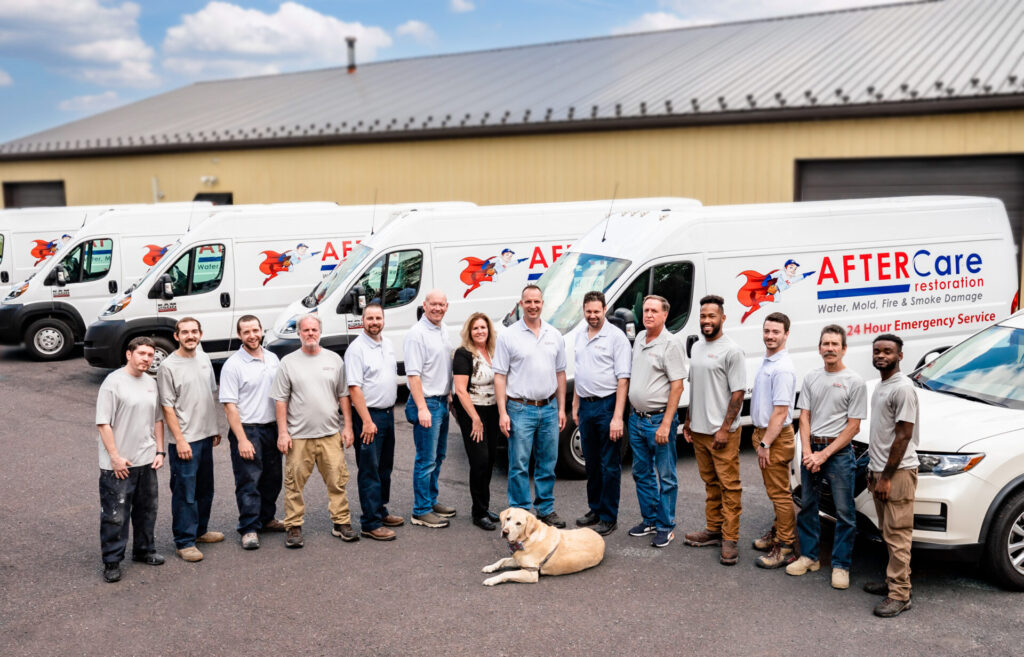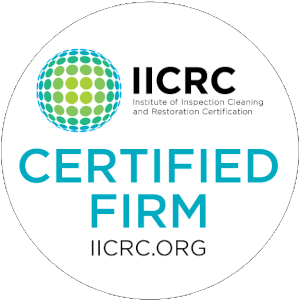
CALL 24/7 AFTERCARE RESTORATION 215.515.1000




If your home’s been damaged in a flood, taken on water through a severely damaged roof, or seen a major plumbing failure or sewage backup, it may be obvious that you’ll need the help of a water damage restoration service.
But what if your water damage is the result of a small leak? How can you spot the telltale signs of water damage and stop the leak before it does any more damage?
Most water damage occurs due to either a small leak in a plumbing fixture or pipe or due to failed roofing that allows small amounts of water to trickle into the house. While these leaks may look small, if left unchecked, they can cause major damage to your home’s structure and finish, open the doors to mold and mildew, and present dozens of other problems.
In this article, we’ll take a dive into spotting and identifying water damage in your home while it’s still in the early stages.
Stains on the Walls or Ceiling
The first sign of water damage that most people notice is the appearance of a slowly growing stain on their walls or ceiling. As water seeps through drywall or plaster, it leaves a stain that gradually increases in size. On white or light-colored surfaces, this stain will usually be brown or beige; on darker surfaces, it may not appear as a discoloration, but as a deformed or sunken spot.
Flaking or Peeling Paint
Regardless if your walls are drywall, wood paneling, or even old lath-and-plaster construction, if water has seeped through the wall, it will probably cause the paint to lift off the surface. This will initially appear as a small bubble or blister in the paint, which will gradually grow, split open, and show up as loose, flaking paint. Just like a stain on the drywall, tracking down the source of this water damage can be tricky.
Soft or Warped Drywall
When water comes into contact with drywall, it soaks in and breaks down the bonds between the gypsum particles that make up the majority of the mass of a piece of drywall. This softens the drywall and causes it to sag or buckle. Sometimes, this sagging will be seen as a lines of small dimples that mark the locations of the screws or nails that hold the drywall to the studs. Eventually, if left untreated, the drywall can collapse completely, especially ceiling drywall.
The water soaking into the gypsum making up a sheet of drywall also increases its weight, which can also cause walls and ceilings to sag and collapse.
A Musty, Moldy Smell
Especially in the warmer months of the year, untreated water damage will eventually begin to harbor mold, mildew, and other fungi. If you can smell a musty, moldy odor in your home or business, you may be experiencing hidden water damage. In these cases, the process is simple: follow your nose. Once you find the location of the mold growth, you can work backwards to find the site of the leak.
CALL 24/7 AFTERCARE RESTORATION 215.515.1000

Finding the Leak
If the spot is on the ceiling, you may be able to easily get into the attic to try and identify the source of the water. Small leaks can be hard to track, however, as small drops of water can run along the rafters or trusses in your roof structure and fall onto the drywall dozens of feet away from the roof leak. Plumbing leaks can run back along the pipes for a considerable distance before falling and pooling on the drywall, as well.
If the spot is on the wall, you’ll probably have to remove drywall to identify the source of the water. Keep in mind that water can actually fall through the roof and into holes in your walls’ top plates, making a roof leak look like a plumbing leak inside the wall – tracking down these sources of water damage can be very tricky.
If there’s any question as to whether the leak is a structural issue or a plumbing problem, there’s a test you can try to determine where the water’s coming from. Note that this will only work on plumbing leaks large enough to maintain at least a small stream of water, and only if you’re connected to a municipal water system. Homeowners with tiny leaks that only produce a drip of water or those who get their water from a well or cistern won’t be able to use this trick.
First, turn off all taps and other water-using devices in your home, including your icemaker. Then, open your water meter and find the gauge that records your water usage. There will be a small round window containing a red triangle in the gauge’s face. If that triangle is turning at all with all water valves in your home closed, then you have a plumbing leak. If it’s a small leak, it will be turning very slowly, so you may have to watch for a few minutes.
After You Find the Leak
Once you’ve determined where the water is coming from, the next step should be to stop the leak and prevent additional damage. For plumbing leaks, turn off the water supply to your home or, if the leak is after a cut-off valve, turn off that particular valve to stop the leak until repairs can be made.
For roof leaks, cover the damaged section of the roof with a tarp.
Regardless of the source of the water, cleaning up and repairing water damage can be a considerable task, and you may need to contact a water damage restoration company to return your home to its pre-leak condition.
After Even a Small Leak, Contact AfterCare Restoration Right Away to Begin Mitigation and Restoration for Your Home: 215.515.1000
Related Articles:
- Can I Get Federal Assistance for Water Damage Restoration After a Flood?
- How to Recover Personal Items After Water Damage
AfterCare Restoration is a Local Family- & Veteran-Owned damage restoration company. We specialize in 24/7 water damage restoration, fire board-up, fire damage restoration, smoke damage restoration, and full reconstruction services.
At AfterCare, we use the latest technology, arrive in marked vehicles and professional uniforms, and stand 100% behind our work. This is why at AfterCare, we consistently receive 5 star reviews from customers that choose AfterCare for water damage cleanup and fire and smoke damage restoration.
RESIDENTIAL AND COMMERCIAL WATER & FIRE DAMAGE RESTORATION SERVICES AVAILABLE 24/7
AfterCare Restoration is available for fire restoration in and around the following communities:
CALL 24/7 AFTERCARE RESTORATION 215.515.1000
- Allentown PA
- Ambler PA
- Audubon PA
- Blue Bell PA
- Collegeville PA
- Chalfton PA
- Coopersburg PA
- Doylestown PA
- East Greenville PA
- Fort Washington PA
- Harleysville PA
- Hatfield PA
- King Of Prussia PA
- Lansdale PA
- Macungie PA
- New Hope PA
- Newtown PA
- North Wales PA
- Pennsburg PA
- Perkasie PA
- Red Hill PA
- Plymouth Meeting PA
- Quakertown PA
- Schwenksville PA
- Skippack PA
- Souderton PA
- Telford PA
- Warminster PA
- Wayne PA
- Willow Grove PA
